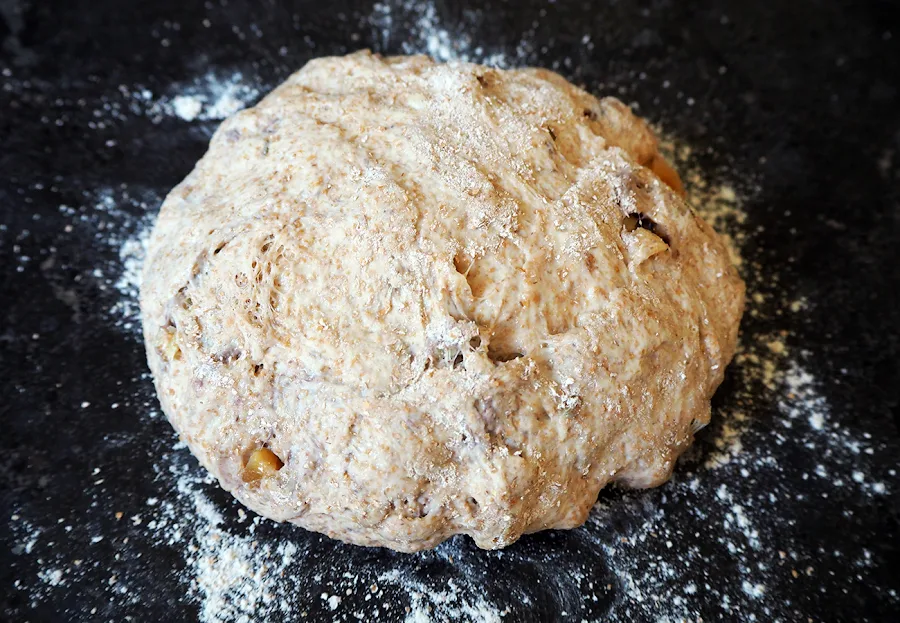Indulge in those sweet and savoury middle eastern flavours with this vegetarian kibbeh recipe.
I love middle eastern food and flavours. I regularly make hummus, flatbreads or kofta. Couscous is a staple in our household. Kibbeh is a wonderful middle eastern bulgur dish. It is traditionally made with meat. After some research I found a couple of vegetarian kibbeh recipes and adapted them to create my pumpkin kibbeh. Now, I'm no expert in traditional middle eastern food and traditionalists among you might say this is not how it's supposed to be. And you are probably right. So let's call this 'kibbeh inspired'.

About the spice mix: I raided my spice cupboard and went crazy. If you don't have all of those readily at hand, cumin and cinnamon or coriander will do. I like the addition of smoked paprika as it gives the dish a hint of smokiness. The best way to find out what you like best, is to try out different variants of the spice mix. It's very important to taste the mix as you go and to adjust seasoning and spices until you achieve the perfect balance of flavours.
If you cannot find pumpkin, I reckon you can also be make this kibbeh with sweet potato. I chose to steam the pumpkin to keep all flavours in but you can also boil it or bake it until very soft and tender.
Baked pumpkin kibbeh
makes one small pie (20cm diameter)
500g pumpkin (peeled)
1/2 cup bulgur wheat
1 small red onion
1 small garlic clove
2-3 tbsp olive oil
1 tbsp all purpose flour
1/2 tsp ground cumin
1/4 tsp ground coriander seeds
1/4 tsp cinnamon
1/4 tsp smoked paprika
1 large pinch of sumac (optional)
1 pinch of red chilli flakes (optional)
1 pinch of nutmeg
salt and pepper to taste
1/2 cup bulgur wheat
1 small red onion
1 small garlic clove
2-3 tbsp olive oil
1 tbsp all purpose flour
1/2 tsp ground cumin
1/4 tsp ground coriander seeds
1/4 tsp cinnamon
1/4 tsp smoked paprika
1 large pinch of sumac (optional)
1 pinch of red chilli flakes (optional)
1 pinch of nutmeg
salt and pepper to taste
Preheat the oven to 200°C (top/bottom heat).
Peel and cut the pumpkin in small chunks. Cover generously with salt and let sit for 15 minutes. Put it in the steamer and steam (or boil) until very soft and tender.
Meanwhile soak the bulgur in lukewarm water for 20 minutes. Drain and let sit for 10 minutes to let all the excess water drain away. Slice half of the onion very thinly, coarsely grate the other half. Mince the garlic clove. Brush a 20cm pie dish generously with olive oil and arrange the sliced onion in a single layer at the bottom of the dish.
Once the pumpkin is done, mash it into a puree. In a large bowl, combine with the drained bulgur, garlic and grated onion. Start adding seasoning (start with 1/2 tsp salt) and spices and mix well. Taste and adjust spices and seasoning until you are satisfied with the taste.
Sift 2 tablespoons all purpose flour over the top to avoid flour pockets and mix really well. Taste one last time to be sure the spice mix is alright :)
Spoon the pumpkin mix onto the onions in the pie dish and spread out evenly. Brush the top generously with olive oil and cut in diamond shapes (or whatever shapes you like).
Bake for about 50 minutes until golden. The onions in the bottom should be caramelised and taste wonderfully sweet.
Sprinkle with Za'atar and serve with minted yoghurt. It also makes for a delicious side accompanying lamb koftas.
Bake for about 50 minutes until golden. The onions in the bottom should be caramelised and taste wonderfully sweet.
Sprinkle with Za'atar and serve with minted yoghurt. It also makes for a delicious side accompanying lamb koftas.
Baked pumpkin kibbeh
Indulge in those sweet and savoury middle eastern flavours with this vegetarian kibbeh recipe. I love middle eastern food and flavours. I...






